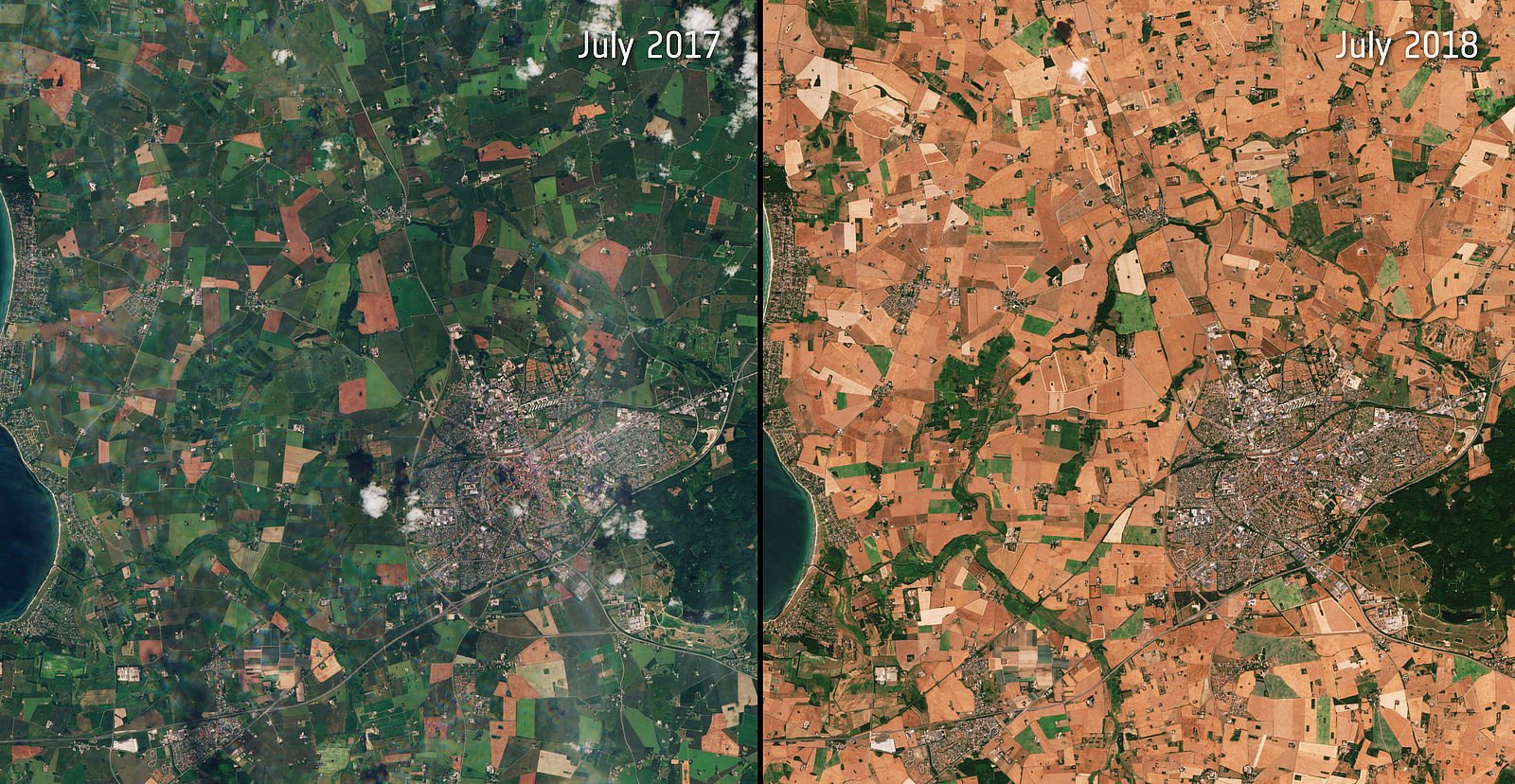Extreme weather means unexpected, unusual or severe weather phenomenon, which means the weather is at the extremes of the historical climate record. According to the definition of US NOAA, if a weather event is lying in the most unusual 10% of a location’s weather recorded, it will be defined as a extreme weather. Rising temperature directly and mainly impact the water cycle on Earth. The mechanisms that Earth has for thousands of years to maintain the environment has been malfunctioning due to warming climate. And the weather is in turmoil as well. Global climate indicators are setting new records every year. This means that the climate situation is becoming more and more severe. Extreme climates includes the following types:
Heat Wave
The period of extreme high temperatures is called heat wave. The water holding capacity of air increases by about 7% per 1 degree Celsius (Thermodynamics). Hence, high temperatures are probably accompanied by high levels of humidity. If heat wave happens inland or in the area of water shortage, it probably brings catastrophically dry weather. Severe heat wave can cause dehydration and heat stroke, and also threatens different species and crops. During the excessive heat, plants shut their stomata to avoid water loss. This will reduce the ability of plants to photosynthesize, making them difficult to absorb carbon dioxide and produce oxygen. Plants that lose too much water can become dry and flammable, which can easily cause fires.

Cold Wave
There is a heat wave when the temperature is high, and a cold wave when the temperature is low.Cold wave is caused by the movement of air masses. As the global average temperature rises, there will be an unusually cold wave of extreme low temperature. The cold air mass with extremely low temperature should be confined to the polar regions. That it moves to mid-latitudes is a phenomenon called Polar Oscillation. It occurs in both North and South Poles.
On September 7, 2020, the Celsius temperature in Denver of US dropped from 33 degrees at 12 noon that day to 0 degrees at 6 a.m. the next day. The local weather turns from heat to blizzard within 24 hours. This is because a strong pacific cyclone went northward and squeezed the cold air of Arctic, causing the cold air mass of Arctic went southward into the mid-latitudes. The extreme low temperature phenomenon of Arctic Oscillation also appeared in Taiwan from late December 2016 to mid January of the following year.
Under normal conditions, the cold winter currents in low latitudes come from the continental cold air masses in the middle latitudes. The cold air masses in the polar regions usually do not go out of the polar circle. The causes of polar oscillations are related to extreme weather and earth axis shifts. It is a scientifically known phenomenon that the Earth’s spin axis is not fixed. The movement of the Earth’s axis is known as drift and oscillation. The former is called polar motion, which refers to the slow drift of Earth’s axis relative to the surface. The latter is called nutation, which refers to the nodding-like wobble of the Earth’s axis.
According to NASA scientists, there are three major causes of Earth’s axis drift: Glacial rebound, contemporary ice sheet loss, and mantle convection. The first and the third causes only small drift. However, the massive melting of ice will lead to a redistribution of mass throughout the Earth. The Earth’s axis would thus tilt toward the weightless position, creating a great deflection. (NASA 2018)
Torrential Rain and Flood
The most immediate and major effect of rising temperatures is Earth’s water cycle out of balance. The mechanisms that the Earth has used for tens of thousands of years to maintain its environment are thus becoming more fragile, chaotic and unpredictable. One degree Celsius increase in temperature means that the water content of the atmosphere increases by 7%, resulting in a 1-2% increase in rainfall. In other words, the atmosphere must accumulate more water before rain, resulting in torrential rain and longer dry periods. The rise in temperature will also accelerate the evaporation of water from the ocean and land, making the drought more severe.
Although the torrential rain is heavy, it is difficult to be stored and used. Most of the rainwater will flow into the ocean, because the raining period is too short. In addition, there is a high probability of heavy rains creating floods that can damage reservoirs and water supply stations. The soil and rocks washed down by the rainstorm make the water high in mud and sand, and the water purification plant cannot use excessively turbid water, which will stop the water supply. Extreme climate change have altered river flows and groundwater distribution, making water management and supply more and more difficult and even to the point of water shortage.
Further Reading: 1-2 The Cost of Meat Eating Habit and Livestock|1-3 Greenhouse Effect and Greenhouse Gases | 1-5 The Real Percentage of Emission |2-1 Melting Ice|2-3 Sea Level Rises
Cited Reports:NOAA_Extreme Events|NASA_Three Causes of Earth’s Spin Axis Drift|NOAA_Global Warming and Hurricanes|AGU_Polar Drift in the 1990s Explained by Terrestrial Water Storage Changes|AGU_Rapid Ice Melting Drives Earth’s Pole to the East
Relative Download: Diet and Environment Relative Download





